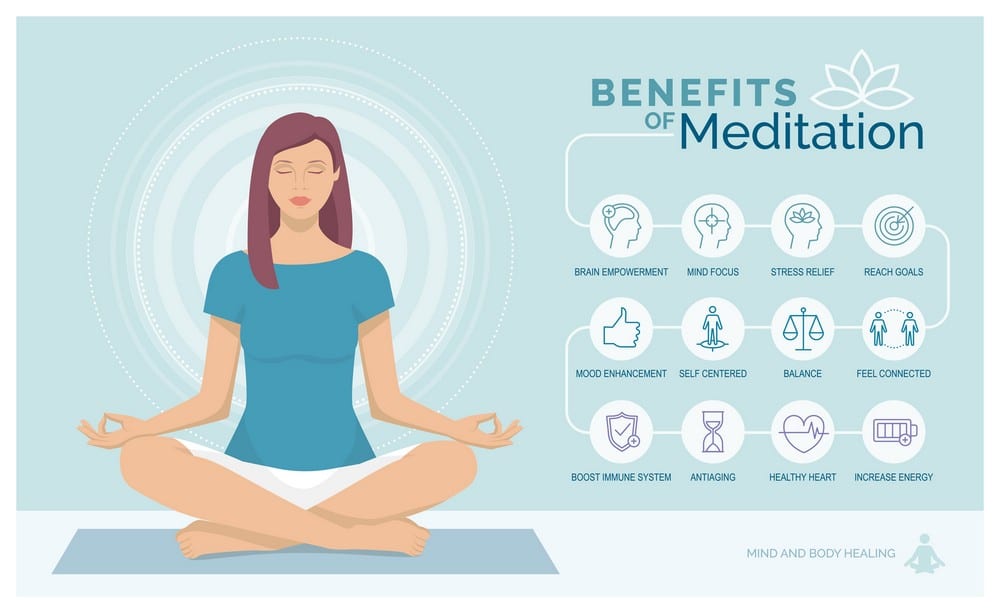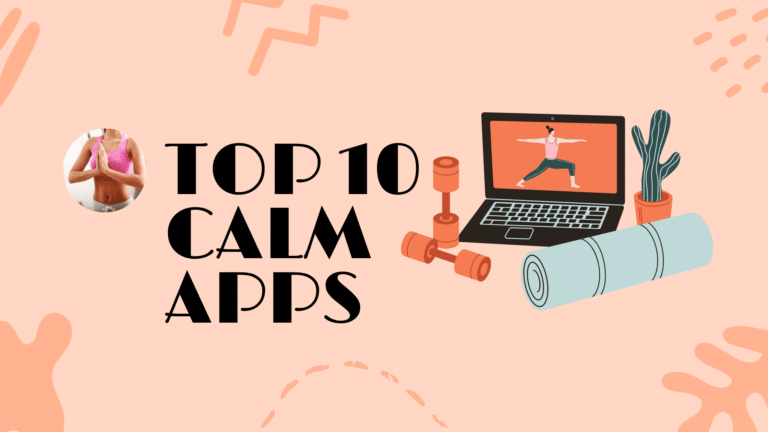The All-in-One Guide to Meditation for Pain Management
Published on January 14, 2020 – Last Updated on March 13, 2024
The current trend in medical science has been to move to a biopsychosocial approach to patient management. For example, meditation helps you manage the pain in a simple & helpful way.
In this management of pain and other conditions that lead to deterioration of health, the medical practitioners focus not only on their patients’ physical well-being but also on enhancing the patient’s life from a social and psychological prism.
In this way, the patient’s overall well-being is achieved, which is the primary definition of being healthy. Meditation and its effects on promoting mindfulness have been a very active part of the biopsychosocial approach to treating a patient. Meditation for pain is a prevalent option among patients and doctors.
Knowing More About Pain

beautiful & painful in the same photo
The Ambiguity
Pain and its management have always been a great challenge for all those involved in the medical profession, be it doctors, therapists, or other health professionals. The facts surrounding pain and its transmission to the various parts of the body from the brain are very ambiguous. In addition, different types of pain are known to occur in the body for varying reasons.
Amidst this uncertainty, the problem arises when the patient complains of pain in the body, but the root cause cannot be diagnosed. Unfortunately, it has been reported in ample cases that this undiagnosed pain for which no specific treatment exists and that persists and lingers has resulted in severe health conditions in patients.
Therefore, when diagnosing the underlying pain becomes severe, the doctors immediately provide symptomatic treatment so that the patient receives adequate relief from the problem and complications do not arise.
Review the best apps for anxiety on our blog.
The Search for Alternative Treatments
But providing symptomatic relief from any pain is easier said than done. Medical practitioners and even spiritual practitioners have proposed many treatment plans that can effectively manage pain. But, different types of pests respond differently to these treatments, and many don’t show any sign of improvement at all.
Therefore, people are going in for alternative therapies that can be helpful in the management of their pain. One such alternative for the pain management process is adopting a meditation routine. Therefore, meditation for pain is now becoming an active part of treatment protocols whenever the target of the treatment is to reduce pain.
Meditation for Pain

Distress and suffering with a human eye crying a single teardrop with a screaming facial expression of anguish and pain due to grief, emotional loss, or business burnout.
- Meditation for Chronic Pain
Meditation for pain comes in handy when the patient suffers from chronic pain. The reflection for chronic pain has reportedly shown promising results and improvement. However, chronic pain has persisted in the body for a long time and does not resolve even when taking high doses of pain killers. In such a case, the mind has to be controlled so that the pain can be managed, and for this purpose, guided meditation for pain becomes very necessary.
Guided meditation for pain is the most crucial or rather the nucleus of the whole protocol, which is designed for implementing meditation for chronic pain management. This is why most meditation instructors are learning the art of guided meditation.
Even popular self-help meditation apps such as the Mindtastik app have incorporated this practice. Meditation for pain eradication is based on the principle of insight pain management. Meditation for pain management involves the development of mindfulness in the body, which ultimately provides pain relief as one of its better effects.
- Mindfulness and Pain
As stated earlier, insight pain management focuses mainly on promoting mindfulness. Although not much significant evidence is present that can assure the results from this guided meditation for pain management, there have been some pilot studies where outstanding achievements have been recorded among patients who have suffered from vague pains, such as those in fibromyalgia.
It was in these studies that it was also concluded that meditation for pain management could have a significant effect on improving the tolerance of pain, can help in decreasing the depression that one slips into when they have to suffer for a long time, and it elevates the overall state of mind.
- Meditation= Practical Awareness of Pain
Pain management meditation, which involves increasing the body’s mindfulness, aims to make the person more aware of their suffering. By saying “making them more aware,” we do not mean that it will ultimately cause the patient to accept or reject their suffering, but it’s just that mere awareness of their own body can help in fighting the situation better. As part of this pain meditation program, mindfulness will also help make the patient believe that the pain has its phases, and there will be a phase where they will certainly feel good about their body.
It is this phase that they have to maximize in terms of their living, and this way, the patient will learn to focus more on the positive aspects, and gradually, the negativity will be drawn out.
Reiterating what has been stated earlier, it has to be kept in mind that by becoming mindful through this pain meditation treatment, the person does not reject their reality but still happens to accept it in a better way such that the day-to-day life does not get hampered just because of this pain.
Other Effects of Meditation on Pain
Proximity to the Emotions
Meditation, apart from helping us become more aware of our body, also helps us explore the most profound emotions of our mind. When we know about the feelings that we experience, we gradually learn about the actions that can trigger certain emotions, which eventually leads to either the aggravation or the remittance of our pain.
Therefore, pain management meditation can achieve an increment in emotional resistance and a definite reduction in the tension that we suffer from while being patients of chronic pain.
Techniques of Meditations for Pain

Walk on fire is a life and cultural concept of the power of faith and mind over matter as a rite of passage ritual and ancient tradition of walking over hot burning coals with fire flames and smoke.
1. Walking Meditation
Meditation for pain can be implemented with many techniques. However, one of the most popular techniques for pain management by reflection is the Walking Meditation technique. In Walking meditation, the main aim is to enhance proprioception.
In simpler words, the person is told to become more attentive toward the movement of their body and the body parts in space. For example, while walking, the person is said to focus on the sensation of the foot hitting the ground and be attentive to the movement of their legs.
In this way, the whole focus of the mind gets shifted onto this movement of the body in space, while other toxic sensations trigger pain when they are sensed by the brain get blocked in one way.
As an integral part of any meditation program, focusing on the way you are walking and all the different sensations that can be felt during the process of walking can assist in experiencing many kinds of emotions in the body.
2. Basic Meditation
The most basic form of meditation is the most helpful for pain management, by meditation. In this technique, the patient is first made attentive to their breathing patterns.
They have to primarily show a total concentration on breathing in and breathing out. Many new activities are added to the treatment protocol such that the thoughts in the mind drift away from the experience of suffering caused by the pain. These activities can be simple, daily activities that the patient has either forgotten or purposefully left because of the fear that performing them will trigger pain in their body.
In this way, meditation for pain also helps rehabilitate patients who have suffered from chronic pain for a long time. In the initial stages of basic meditation, you can listen to and follow the motivational talks from an instructor to overcome the anxiety that you may face due to these painful conditions. These instructors can be in self-help meditation apps and websites like the Mindtastik app and some others.
3. Mental Imagery
Mental imagery is a modern relaxation technique that has been included in the treatment protocols of meditation for pain relief. It is based on the principle that prominent cognitive processes can help suppress other sensory phenomena in the brain, one of which is sensing pain by the action of the neurological pain pathway.
In mental imagery, the patient is instructed about specific situations to draw and imagine a picture in their mind. They have to do this consistently as per the instructor’s instructions. In this way, the entire focus of the brain gets shifted and used in doing this mental imagery, while the sensations of the pain get side-lined, and the patient transiently forgets about them.
How Meditation Controls Pain?

Find out the best meditation benefits on pain.
As we said earlier, the presence of adequate research on the proposed effects of meditation for pain on the management of suffering is very scanty, and the interpretations in many of the studies have not gained much acceptance.
But as per some research, the interpretation of this management of paint by the meditation processes is based on the principle that guided meditation for pain, on the one hand, suppresses certain parts of the brain. But, on the other hand, it strengthens the thoughts which are not involved in sensing pain.
Some other researchers have stated that meditation, in its usual form, helps reduce stress on the mind and consequential to which is the reduction of pain levels that the individual feels. But here, it should also be made clear that all this research has indicated that pain management by meditation is a transient process and that it has to be supplemented with proper medical and pharmacological assistance.
Cases Where Meditation is Useful
Among all types of chronic pain, those known to occur without any tissue damage in the body and primarily because of psychological reasons are the ones that have shown excellent signs of improvement through meditation for pain. In addition, pain medication has been very successful in subsiding phantom pain.
Phantom pain is a psychological pain experienced by people who have gotten a part of their body amputated but are still complaining of pain in that same body part. Apart from this, medication for pain can be effective in cases of fibromyalgia, where the patient has a vague distribution of pain in the body without an underlying cause.
Along with this, even atypical pains in the body, such as on the face and the neck, can be treated with prolonged meditation programs. Ultimately the sound effects of pain management meditation are only viable when they are practiced along with proper medical care. Pharmacological treatment with meditation has been successful in many cases where the pain is shown to be of pathological and psychological origins.
Meditation for Pain Relief
There are many different types of meditation techniques that can manage pain. Some of these include the Mindtastik app, where you can access a range of personalized meditations and sessions specifically designed to help manage stress and emotional difficulties. In addition to this, below mentioned are some mediations techniques for pain management that have been documented as effective:
1. Meditation – The simplest form of meditation that requires sitting down in a comfortable position and focussing on the breath going in and out is a great way to reduce stress and anxiety levels. This process also helps manage muscle tension, which is a significant factor behind discomfort from chronic pain. Apart from this, the technique is also known to activate the brain’s anterior cingulate cortex. This area has been found to play a significant role in negative emotions, mood regulation, and pain. When this part is activated, the patient can immediately derive some relief from their symptoms.
2. Yoga – Yoga has many positive effects on various medical conditions, including chronic pain, along with its postures and breathing techniques. Apart from these, many other yoga routines can be incorporated into Pain Management Meditation Apps
These pose slow down the breathing rate, increase blood flow in the body, and relax the parasympathetic nervous system, thereby relaxing muscles tense with stress. Apart from these, yoga also reduces cortisol levels in the body, recognized as one of the major causes of inflammatory pain. Yoga also enhances heart rates positively, which has been known to help deal with arthritis-related discomfort in the hands and feet. Studies had shown that when subjects were made to practice simple yoga poses for fifteen minutes once a day for three days per week, they felt more relaxed and reported significant improvement in their symptoms two months of beginning this routine.
Meditation for Back Pain
Nowadays, many people suffer from back pain due to prolonged sitting at their desks. Some people are experiencing more severe back pain than others. This is because some people are using the wrong postures, which end up causing damage to the spine. When you are feeling back pain, there are some practical ways to use meditation to help heal your injury. Such mediation techniques include practices like Yoga Nidra and Diaphragmatic Breathing. Both of these techniques can be done by anyone, even if they have never done them before. Yoga Nidra is a yoga technique that induces meditative trance by slowly guiding you through a guided meditation session. Diaphragmatic breathing is a form of deep breathing exercise first thing you have to do is find a quiet place where you can meditate. You should also try sitting on the floor if possible, as this will allow your muscles to relax. This way, your back pain may decrease as well as your stress level. So, try doing things such as yoga meditation techniques for lower back pain and relieve the pain with instant results.
The Takeaways
In totality, it can be said that meditation for pain relief is a reality. There are many aspects of pain management by meditation, and they have to be understood very well if you are willing to obtain the best effects. Along with this, it cannot be ignored that only meditation cannot successfully tackle painful conditions. So, the essence comes out to be that the inclusion of meditation for pain can be a very successful strategy when you are finding ways to manage your pain.







